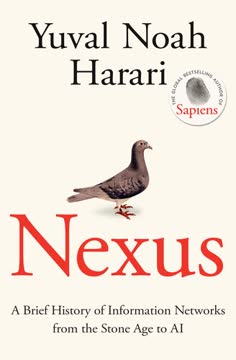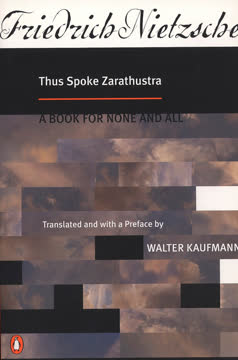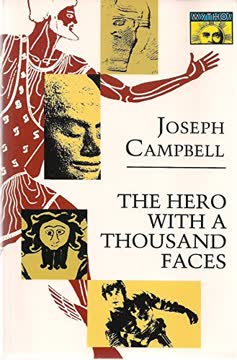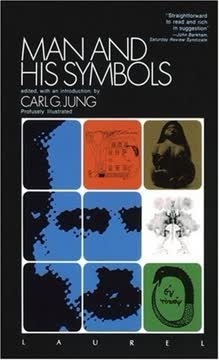Key Takeaways
1. התת-מודע משחק תפקיד מכריע בעיצוב התנהגות אנושית וחוויות
התת-מודע אינו רק מאגר לכל הדברים הלא נעימים, אלא מקור לכל הטוב והרע.
המוח החבוי. התת-מודע מכיל מאגר עצום של מידע, זיכרונות ואינסטינקטים המשפיעים על מחשבותינו, רגשותינו ופעולותינו. הוא פועל מעבר למודעות המודעת שלנו, אך מעצב באופן עמוק את חוויותינו ותהליכי קבלת ההחלטות שלנו.
טבע דו-ערכי. יונג הדגיש שהתת-מודע אינו רק מאגר למחשבות ורצונות מדוכאים, כפי שהציע פרויד, אלא כוח דינמי ויצירתי. הוא מכיל גם צדדים חיוביים וגם שליליים, ומשמש כמקור הפוטנציאל שלנו לצמיחה ולהרס.
רכיבי התת-מודע:
- תת-מודע אישי: זיכרונות וחוויות מדוכאות של הפרט
- תת-מודע קולקטיבי: דפוסים ואינסטינקטים אוניברסליים, תורשתיים
- קומפלקסים: אשכולות של רעיונות וזיכרונות טעונים רגשית
- צל: ההיבטים האפלים, הלא מוכרים של האישיות
2. ארכיטיפים הם דפוסים אוניברסליים המארגנים את הנפש האנושית
ארכיטיפים הם המערכת החיה של תגובות וכישורים המכתיבים את חיי הפרט בדרכים בלתי נראות.
תוכניות תורשתיות. ארכיטיפים הם דפוסים או דימויים מולדים ואוניברסליים הנובעים מהתת-מודע הקולקטיבי. הם מייצגים חוויות ויחסים אנושיים בסיסיים, ומעצבים את האופן שבו אנו תופסים ומתקשרים עם העולם סביבנו.
הManifestations סימבוליות. בעוד שהארכיטיפים עצמם הם מופשטים, הם מתגלים במוחותינו המודעים דרך סמלים, מיתוסים ומוטיבים תרבותיים. התגלויות אלו עשויות להשתנות בין תרבויות, אך הדפוסים הבסיסיים נשארים עקביים.
ארכיטיפים מרכזיים שזוהו על ידי יונג:
- העצמי: העיקרון המרכזי המארגן את הנפש
- הצל: ההיבטים האפלים, המדוכאים של האישיות
- האנימה/אנימוס: ההיבט הנשי/גברי של הנפש
- האיש/האישה החכמים: ארכיטיפ החוכמה והמשמעות
- הגיבור: ארכיטיפ השינוי והצמיחה
3. תהליך האינדיבידואציה מוביל לשלמות פסיכולוגית ולהגשמה עצמית
אינדיבידואציה פירושה להפוך ל"פרט", וככל ש"הפרטיות" כוללת את הייחודיות הפנימית, האחרונה והבלתי ניתנת להשוואה שלנו, היא גם מרמזת על הפיכתנו לעצמנו.
מסע לשלמות. אינדיבידואציה היא תהליך מתמשך של התפתחות פסיכולוגית ואינטגרציה. הוא כולל מודעות ואינטגרציה של ההיבטים השונים של האישיות, כולל האלמנטים התת-מודעים, כדי להשיג תחושת שלמות ואותנטיות.
אקט של איזון. תהליך האינדיבידואציה דורש איזון בין הדרישות של החברה לבין הצרכים והפוטנציאלים הפנימיים של הפרט. הוא כולל התמודדות ואינטגרציה עם הצל, פיתוח מערכת יחסים עם האנימה/אנימוס, ולבסוף הגשמת העצמי.
שלבי האינדיבידואציה:
- פיתוח פרסונה: התאמה לציפיות חברתיות
- אינטגרציית הצל: הכרה וקבלה של הצד האפל
- פיתוח אנימה/אנימוס: אינטגרציה של ההיבט הנשי/גברי
- הגשמה עצמית: השגת תחושת שלמות ומשמעות
4. חלומות מספקים תובנות יקרות ערך על התודעה התת-מודעת
חלומות הם מוצרים בלתי משוחדים, ספונטניים של הנפש התת-מודעת, מחוץ לשליטת הרצון. הם טבע טהור; הם מראים לנו את האמת הלא מעובדת, ולכן הם מתאימים, כמו שום דבר אחר, להחזיר לנו גישה התואמת את טבענו האנושי הבסיסי כאשר התודעה שלנו התרחקה מדי מהיסודות שלה ונקלעה למבוי סתום.
חלונות לנפש. חלומות מציעים דרך ישירה לתודעה התת-מודעת, מציגים ייצוגים סימבוליים של הקונפליקטים הפנימיים, הרצונות והפוטנציאלים שלנו. הם משמשים כפעולה פיצוי טבעית, מאזן את העמדות המודעות שלנו ומספקים הכוונה לצמיחה פסיכולוגית.
פרשנות וניתוח. יונג הדגיש את החשיבות של הבנת חלומות בהקשר לחיי הפרט ולנפשו, ולא להסתמך על פרשנויות סמלים קבועות. הוא פיתח שיטות כמו חיזוק ודמיון פעיל כדי לעבוד עם חומר החלומות.
היבטים מרכזיים של ניתוח חלומות יונגיאני:
- אסוציאציות אישיות: חקר הקשרים הייחודיים של החולם עם סמלים
- סמלים קולקטיביים: התחשבות במשמעויות אוניברסליות ותרבותיות
- פונקציה פיצוי: הבנת האופן שבו חלומות מאזנים עמדות מודעות
- היבט פרספקטיבי: הכרה בפוטנציאל של חלומות להנחות התפתחות עתידית
5. אינטגרציית הניגודים חיונית לצמיחה פסיכולוגית
ככל שהמתח גדול יותר, כך הפוטנציאל גדול יותר. אנרגיה רבה נובעת ממתח גדול של ניגודים.
איזון דינמי. יונג הדגיש את החשיבות של הכרה ואינטגרציה של כוחות מנוגדים בתוך הנפש. תהליך האינטגרציה, או הפונקציה הטרנסצנדנטית, מוביל לשלמות פסיכולוגית רבה יותר וליצירתיות.
קבלת הדואליות. במקום לחפש לחסל צד אחד של ניגוד, יונג טען שיש להחזיק במתח בין הניגודים. גישה זו מאפשרת את הופעתה של עמדה שלישית, טרנסצנדנטית, הכוללת אלמנטים משני הצדדים.
דוגמאות לניגודים פסיכולוגיים:
- מודע מול תת-מודע
- חשיבה מול הרגשה
- אינטרובציה מול אקסטרובציה
- אור מול צל
- גבריות מול נשיות
6. סינכרוניזציה חושפת קשרים משמעותיים בין אירועים נפשיים לפיזיים
סינכרוניזציה היא מציאות נוכחת תמיד עבור מי שיש לו עיניים לראות.
קשרים אקזוטיים. סינכרוניזציה מתייחסת למקריות משמעותיות בין אירועים פנימיים וחיצוניים שאינן ניתנות להסבר על ידי סיבה ותוצאה. יונג הציע את המושג הזה כדי להבין את הקשר בין הנפש לחומר.
תפיסת עולם מורחבת. ההכרה באירועים סינכרוניים מאתגרת את ההבנה הקונבנציונלית שלנו של המציאות ומציעה סדר עמוק ומקושר יותר ביקום. פרספקטיבה זו מתאימה להתפתחויות בפיזיקה קוונטית ובתיאוריה של מערכות.
מאפיינים של אירועים סינכרוניים:
- מקריות משמעותית בין אירועים פנימיים וחיצוניים
- אין קשר סיבתי בין האירועים
- פרשנות סובייקטיבית של משמעות
- לעיתים קרובות קשורים לתקופות של שינוי פסיכולוגי
7. ידע עצמי הוא המפתח להתפתחות אישית ולהתקדמות חברתית
החזיונות שלך יתבהרו רק כאשר תוכל להסתכל לתוך ליבך. מי שמסתכל החוצה, חולם; מי שמסתכל פנימה, מתעורר.
חקר פנימי. יונג הדגיש את החשיבות של רפלקציה עצמית ואינטrospection כבסיס לצמיחה פסיכולוגית. על ידי הבנת המניעים, הפחדים והפוטנציאלים שלנו, אנו יכולים לקבל החלטות מודעות יותר ולחיות חיים אותנטיים יותר.
השלכות חברתיות. יונג האמין שידע עצמי של הפרט היה קריטי לבריאות החברה כולה. ככל שהפרטים מודעים יותר לפעולות הפנימיות שלהם, הם פחות נוטים להשליך את התוכן התת-מודע שלהם על אחרים או ליפול קורבן לתנועות המוניות.
שיטות לפיתוח ידע עצמי:
- ניתוח חלומות
- דמיון פעיל
- כתיבה יומנית ורפלקציה עצמית
- פסיכותרפיה
- חקר סמלים ומיתולוגיה
8. דת ורוחניות ממלאות תפקידים פסיכולוגיים חשובים
דת היא קישור חיוני עם תהליכים נפשיים בלתי תלויים ומעבר לתודעה, במעמקי הנפש.
חשיבות פסיכולוגית. יונג ראה את החוויות הדתיות והרוחניות כאספקטים חיוניים של הפסיכולוגיה האנושית, ולא רק כאובייקטים תרבותיים. הוא טען שסמלים ופרקטיקות דתיות ממלאים תפקידים חשובים בנפש, מספקים משמעות וחיבור לממלכה הטרנספרסונלית.
גישה אישית. בעוד שהוא הכיר בערך של דת מאורגנת, יונג הדגיש את החשיבות של חוויה אישית וישירה של הנומינוזי. הוא עודד אנשים לפתח את הקשר שלהם עם הממד הרוחני, בהתבסס על המבנה הפסיכולוגי הייחודי שלהם.
תפקידים פסיכולוגיים של דת:
- מתן תחושת משמעות ומטרה
- הצעת ייצוגים סימבוליים של דפוסים ארכיטיפיים
- סיוע באינטגרציה של תוכן מודע ותת-מודע
- תמיכה בתהליך האינדיבידואציה
- חיבור בין הפרט לתת-מודע הקולקטיבי
9. החברה המודרנית מתמודדת עם אתגרים באיזון בין אוטונומיה אישית לזהות קולקטיבית
התכונה הבולטת של הנוירוזות היא שהן אינן רק אישיות, אלא גם תופעות קולקטיביות.
פסיכולוגיה המונית. יונג היה מודאג מאוד מהשפעת החברה המודרנית על ההתפתחות הפסיכולוגית של הפרט. הוא הבחין במגמה של אנשים לאבד את תחושת האחריות האישית והזהות שלהם מול תנועות המונים ואידיאולוגיות קולקטיביות.
אינדיבידואליות מול ציות. האתגר עבור הפרטים המודרניים הוא לשמור על הזהות הייחודית והערכים האישיים שלהם תוך כדי השתתפות בחברה. יונג טען שיש למצוא איזון בין ההתפתחות האישית לבין האחריות החברתית.
אתגרים פסיכולוגיים בחברה המודרנית:
- אובדן הקשר למקורות מסורתיים של משמעות
- לחץ לציית לציפיות חברתיות
- ניכור מהטבע ומהחוכמה האינסטינקטיבית
- דגש יתר על רציונליות על חשבון דרכי ידע אחרות
- השלכת תוכן הצל האישי על "אחרים" חברתיים
10. המושג של העצמי מייצג את שלמות הנפש ואת הפוטנציאל שלה לשלמות
העצמי אינו רק המרכז, אלא גם כל ההיקף שמקיף גם את המודע וגם את התת-מודע; הוא המרכז של שלמות זו, בדיוק כמו שהאגו הוא המרכז של המודעות.
ארכיטיפ מרכזי. העצמי הוא העיקרון המרכזי המארגן את הנפש, מייצג את שלמות האלמנטים המודעים והתת-מודעים. הוא גם המטרה וגם הכוח המנחה של תהליך האינדיבידואציה.
סמלים של שלמות. העצמי מתגלה לעיתים קרובות בחלומות ובסמלים תרבותיים כדימויים של שלמות, כמו מנדלות, ילדים אלוהיים או זקנים חכמים. סמלים אלו מצביעים על הפוטנציאל לאינטגרציה ולשלמות בתוך הנפש.
מאפיינים של העצמי:
- חורג ומכיל את האגו
- מייצג את האחדות של הניגודים
- מנחה את תהליך האינדיבידואציה
- מתגלה בסמלים של שלמות ושלמות
- מחבר את הפרט לתת-מודע הקולקטיבי
Last updated:
FAQ
What's The Essential Jung about?
- Compilation of Jung's Work: The Essential Jung is a collection of key writings by Carl Gustav Jung, selected by Anthony Storr. It focuses on Jung's theories of the unconscious, archetypes, and individuation.
- Psychological and Spiritual Exploration: The book delves into the complexities of the human psyche, emphasizing the interplay between the conscious and unconscious mind, and the spiritual dimensions of personal growth.
- Cultural and Historical Context: Jung's ideas are placed within a broader cultural and historical framework, examining their relevance to religious beliefs and societal changes.
Why should I read The Essential Jung?
- Foundational Psychological Concepts: The book introduces foundational concepts in analytical psychology, essential for anyone interested in psychology, therapy, or personal development.
- Insight into Human Psyche: Jung's exploration of archetypes and symbols provides insights into personal behaviors and motivations, enhancing self-awareness.
- Relevance to Modern Issues: Jung's ideas about the collective unconscious and self-awareness are particularly relevant in today's world, addressing feelings of disconnection and the quest for meaning.
What are the key takeaways of The Essential Jung?
- Individuation Process: A central theme is individuation, the process of integrating various aspects of the self to achieve wholeness.
- Archetypes and Collective Unconscious: Jung emphasizes the existence of universal symbols and themes that shape human experiences and behaviors.
- Importance of Self-Knowledge: The book highlights the significance of understanding one's unconscious motivations for personal growth and fulfillment.
What is the collective unconscious according to Jung in The Essential Jung?
- Shared Psychological Heritage: The collective unconscious is a part of the unconscious mind shared among all humans, containing universal experiences and archetypes.
- Archetypes as Organizers: Archetypes are primordial images that shape our experiences and perceptions, influencing thoughts, feelings, and behaviors.
- Universal Themes: This concept explains why certain themes and symbols appear across different cultures and historical periods, reflecting commonalities in human experience.
What are archetypes, and how do they function in Jung's theory?
- Definition of Archetypes: Archetypes are innate, universal symbols and themes residing in the collective unconscious, representing fundamental human experiences.
- Influence on Behavior: They shape perceptions and reactions, often influencing dreams and fantasies, guiding understanding of self and relationships.
- Role in Therapy: Recognizing and integrating archetypes can facilitate personal growth and healing, offering insight into unconscious motivations and conflicts.
How does Jung define individuation in The Essential Jung?
- Process of Becoming Whole: Individuation is the process of integrating various aspects of the self, including the conscious and unconscious, to become a unified whole.
- Integration of Opposites: It involves reconciling opposing forces within the psyche, such as the shadow and the anima/animus, leading to a balanced personality.
- Lifelong Journey: Jung portrays individuation as a lifelong journey of self-discovery and personal development, requiring courage and commitment.
How does Jung differentiate between the persona and the shadow?
- Definition of Persona: The persona is the social mask or identity presented to the world, shaped by societal expectations and norms.
- Definition of Shadow: The shadow represents the repressed, darker aspects of the personality, including undesirable traits and emotions.
- Integration for Wholeness: Achieving psychological wholeness requires acknowledging and integrating both the persona and the shadow, fostering self-awareness.
What is the significance of the anima and animus in Jung's psychology?
- Contrasting Archetypes: The anima represents the feminine aspect of a man's psyche, while the animus represents the masculine aspect of a woman's psyche.
- Projection and Relationships: Individuals often project their anima or animus onto others, leading to idealized or distorted perceptions of partners.
- Path to Individuation: Engaging with the anima or animus facilitates individuation, allowing integration of inner opposites for greater self-understanding.
What role do dreams play in Jung's analytical psychology?
- Dreams as Compensatory: Dreams are compensatory expressions of the unconscious, providing insight into unresolved conflicts and hidden aspects of the self.
- Symbolic Language: They contain symbols and archetypes reflecting the dreamer's inner experiences and psychological state, crucial for understanding the psyche.
- Path to Individuation: Engaging with dreams helps integrate unconscious contents into conscious awareness, facilitating personal growth and self-discovery.
What is the relationship between alchemy and Jung's analytical psychology?
- Alchemy as a Metaphor: Jung viewed alchemy as a metaphor for individuation, where transforming base metals into gold symbolizes personal growth.
- Symbolism in Alchemy: Alchemical symbols parallel Jung's psychology, particularly regarding the integration of opposites and the quest for the Self.
- Historical Context: Alchemy represents a historical link between ancient wisdom and modern psychology, uncovering deeper meanings behind psychological phenomena.
What is the significance of synchronicity in Jung's work?
- Meaningful Coincidence: Synchronicity is the meaningful coincidence of events not causally related, suggesting connections through meaning rather than cause and effect.
- Psychic and Physical Events: It highlights the relationship between psychic states and physical events, indicating interconnectedness of psyche and external world.
- Implications for Psychology: Synchronicity challenges traditional causality views, opening new avenues for understanding human experience and reality.
How does The Essential Jung relate to modern psychological practices?
- Influence on Psychotherapy: Jung's concepts, like the collective unconscious and archetypes, significantly influence modern psychotherapy, especially in depth psychology.
- Holistic Approach: His work encourages a holistic approach to mental health, valuing emotional and spiritual well-being alongside psychological health.
- Cultural Sensitivity: Exploration of symbols and archetypes fosters cultural sensitivity in therapy, enhancing understanding of clients' experiences within cultural contexts.
Review Summary
יונג החיוני נחשב לאסופה מעולה של הכתבים החשובים ביותר של יונג, המציעה לקוראים סקירה מקיפה של תיאוריות פורצות הדרך שלו. רבים מהמבקרים משבחים את נגישות הספר, ומציינים כי הוא מהווה מבוא מצוין לרעיונות המורכבים של יונג. בעוד שחלק מהקוראים מצאו קטעים מסוימים מאתגרים, במיוחד אלו העוסקים באלכימיה, הרוב העריך את העומק והרחבה של התובנות המוצעות. הקוראים הדגישו באופן עקבי את הרלוונטיות של הספר לפסיכולוגיה המודרנית ולצמיחה אישית.
Similar Books























